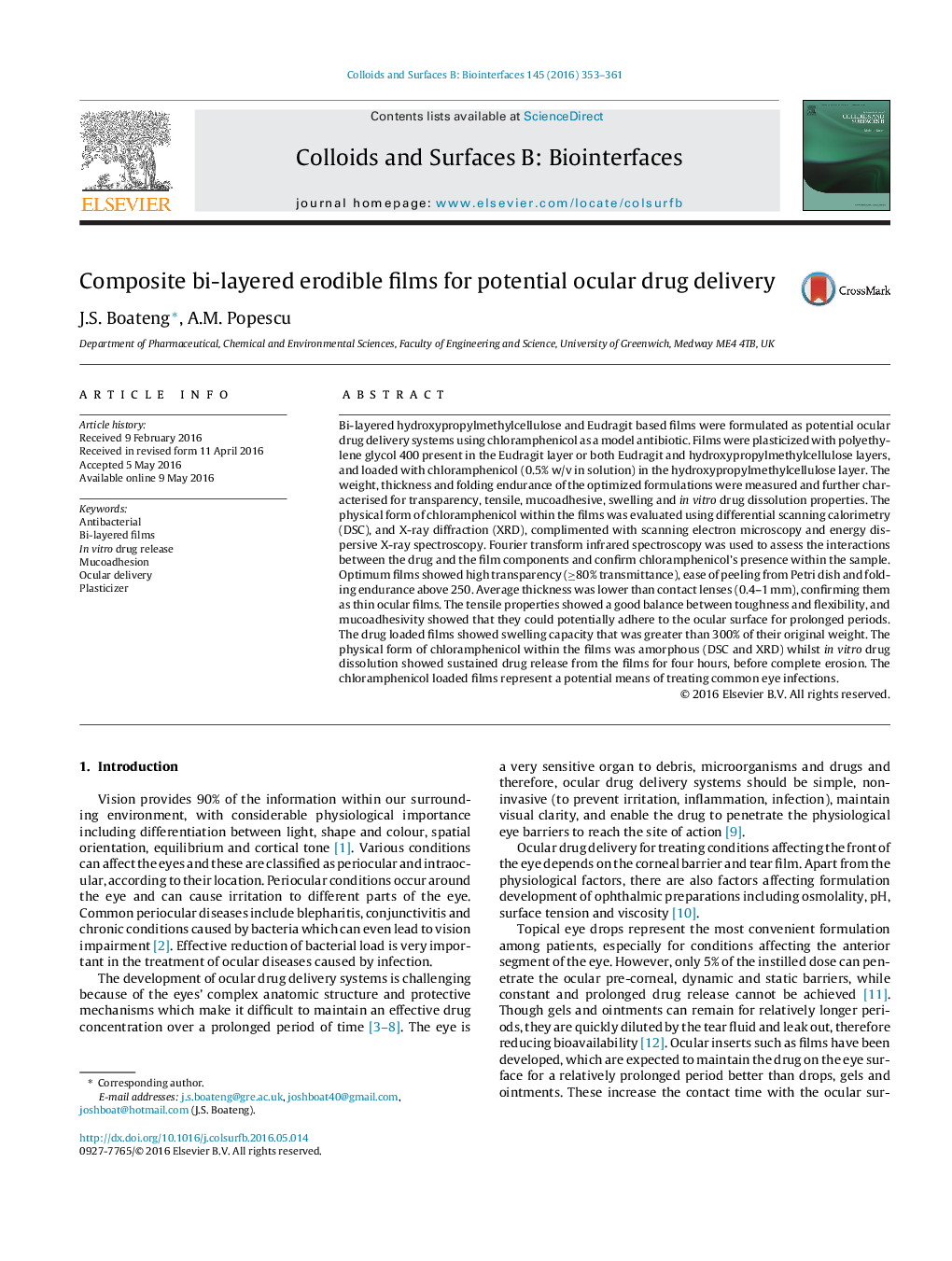| Article ID | Journal | Published Year | Pages | File Type |
|---|---|---|---|---|
| 598958 | Colloids and Surfaces B: Biointerfaces | 2016 | 9 Pages |
•Chloramphenicol has been loaded into composite bi-layered films for potential ocular drug delivery.•Films were clear with appropriate physical, mechanical and mucoadhesive properties.•The films released drug over 4 h and expected to perform better than eye drops and ointments.
Bi-layered hydroxypropylmethylcellulose and Eudragit based films were formulated as potential ocular drug delivery systems using chloramphenicol as a model antibiotic. Films were plasticized with polyethylene glycol 400 present in the Eudragit layer or both Eudragit and hydroxypropylmethylcellulose layers, and loaded with chloramphenicol (0.5% w/v in solution) in the hydroxypropylmethylcellulose layer. The weight, thickness and folding endurance of the optimized formulations were measured and further characterised for transparency, tensile, mucoadhesive, swelling and in vitro drug dissolution properties. The physical form of chloramphenicol within the films was evaluated using differential scanning calorimetry (DSC), and X-ray diffraction (XRD), complimented with scanning electron microscopy and energy dispersive X-ray spectroscopy. Fourier transform infrared spectroscopy was used to assess the interactions between the drug and the film components and confirm chloramphenicol’s presence within the sample. Optimum films showed high transparency (≥80% transmittance), ease of peeling from Petri dish and folding endurance above 250. Average thickness was lower than contact lenses (0.4–1 mm), confirming them as thin ocular films. The tensile properties showed a good balance between toughness and flexibility, and mucoadhesivity showed that they could potentially adhere to the ocular surface for prolonged periods. The drug loaded films showed swelling capacity that was greater than 300% of their original weight. The physical form of chloramphenicol within the films was amorphous (DSC and XRD) whilst in vitro drug dissolution showed sustained drug release from the films for four hours, before complete erosion. The chloramphenicol loaded films represent a potential means of treating common eye infections.
Graphical abstractFigure optionsDownload full-size imageDownload as PowerPoint slide
